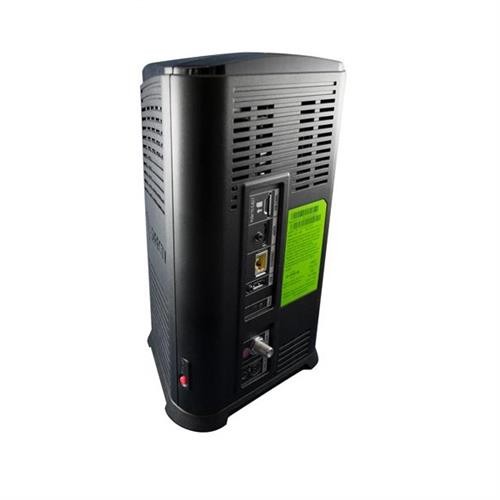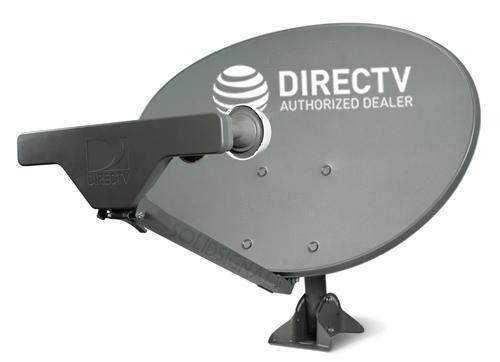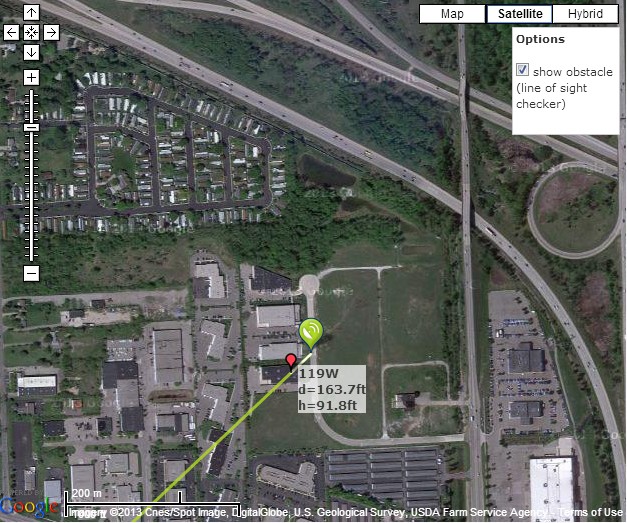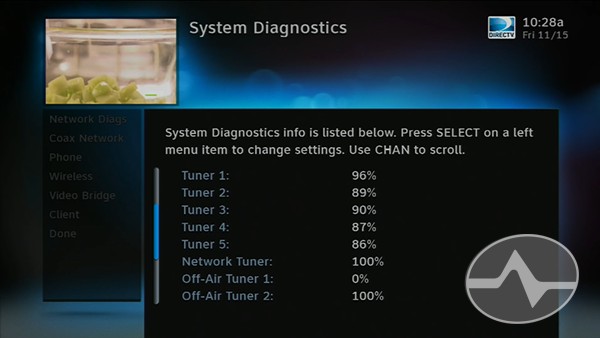DIRECTV guide update issues can be frustrating, but CONDUCT.EDU.VN offers solutions to help you get back to seamless channel surfing; understanding How To Update Directv Guide is essential for optimal viewing. This guide provides troubleshooting steps, dish examination tips, and network tuner checks, ensuring a smooth television experience and resolving guide update problems.
1. Initial Troubleshooting: The Red Reset Button
The first and often most effective step is to reset your DIRECTV receiver or DVR. This simple action can resolve many common issues.
1.1. Locating the Reset Button
The reset button is typically red and can be found on the side or back of the receiver. In some older models, it may be hidden behind a spring-loaded door on the front panel.
- DVR or Receiver: Ensure you are resetting the DVR or receiver itself, not Genie clients or Gemini devices, as this won’t address the guide data issue.
- Genie 2: On a Genie 2, the reset button is located on the side of the tower.
1.2. Performing the Reset
- Press the Button: Press the red reset button.
- Wait for Live TV: Allow 5-7 minutes for the receiver to reboot and live TV to return.
- Press Again: Once live TV is back, press the reset button a second time. This double reset can help ensure the guide data is fully updated.
In approximately 90% of cases, this process resolves the issue, allowing the DIRECTV guide to update correctly.
2. Dish Examination: Addressing Slimline-5 Dish Issues
If the reset doesn’t work, the problem might be related to your dish, particularly if you have a Slimline-5 dish.
2.1. Identifying the Slimline-5 Dish
The Slimline-5 dish is wider at the front compared to newer models. It is designed to receive signals from five satellite locations.
2.2. Understanding the Issue
The Slimline-5 dish uses five satellite locations, but only three are actively used for HD channels. The other two are mostly decommissioned, except for a few SD local channels. If your dish is trying to get data from the 119 satellite, which is often problematic, it can cause guide update failures.
2.3. Checking for Line-of-Sight Problems
A common issue with the Slimline-5 dish is a line-of-sight obstruction. The dish requires a clear view of the sky across a swath of about 22 degrees. Trees or other obstructions can block the necessary signals. Your receiver might not have a clear view of the 119-degree satellite location, causing it to fail to get guide data.
2.4. Performing a Visual Test
- Go Behind the Dish: Position yourself directly behind the dish on the roof (if safe and accessible).
- Turn Your Head: Turn your head to the right about a quarter turn.
- Identify Obstructions: Look for any trees or obstructions in the line of sight. These could be blocking the signal.
2.5. Using Dishpointer.com
If you’re not comfortable on the roof, Dishpointer.com is a valuable resource.
- Enter Your Location: Input your dish’s location.
- Select DIRECTV 119 Satellite: Set the tool to point from your location to the DIRECTV 119 satellite.
- Analyze the Overhead View: The overhead view will show the path the dish needs to point along with any potential obstructions.
2.6. Checking Satellite Signal Strengths
If no obstructions are visible, check the satellite signal strengths.
- Access Signal Strength Menu: Access the signal strength menu on your DIRECTV receiver.
- Check 101 Satellite: Look for a strong signal (higher than 85) on the 101 satellite.
- Check 119 Satellite (if applicable): If you have the Slimline-5 dish, check for a strong signal on the 119 satellite as well.
- Re-Aim if Necessary: If the signals are weak or absent, you may need to re-aim the dish.
3. Upgrading Your Dish: A Permanent Solution
For most users, the Slimline-5 dish is no longer necessary. Upgrading to a newer dish can completely resolve the issue. Contact a DIRECTV professional for information on available upgrades.
3.1. Benefits of Upgrading
- Eliminates 119 Satellite Dependency: Newer dishes do not rely on the problematic 119 satellite for guide data.
- Improved Signal Strength: Upgrading can provide better overall signal strength and reliability.
- Future-Proofing: Newer dishes are designed to support current and future DIRECTV services.
4. Network Tuner Check: Diagnosing Receiver Issues
Older DIRECTV receivers have a dedicated “Network Tuner” that receives guide data. Checking this tuner can help diagnose receiver problems.
4.1. Accessing the Hidden Menu
- Go to the Receiver: Go to the front panel of the older DIRECTV receiver (non-Genie).
- Press GUIDE and Right Arrow: Simultaneously press the GUIDE button and the right arrow button. This may take a few attempts to get right.
- Navigate to Coax Network: In the hidden test menu, arrow down to “Coax Network” and press SELECT using the remote.
4.2. Interpreting the Results
- Strong Satellite Signals, Low Network Tuner Signal: If you see strong signals on all your satellites but the Network Tuner signal is low, it indicates a potential issue with the receiver or DVR itself.
- Replacement Considerations: A failing Network Tuner is a sign that the receiver or DVR may need to be replaced.
Unfortunately, this hidden menu is not available on Genie systems.
5. Troubleshooting Summary: A Step-by-Step Guide
To efficiently resolve DIRECTV guide update issues, follow these steps:
- Reset the Receiver: Use the red reset button on the DVR or receiver.
- Check the Dish: Examine the dish for any obstructions, especially if you have a Slimline-5 dish.
- Verify Signal Strength: Check the signal strengths for the 101 and 119 satellites.
- Consider Upgrading: If the Slimline-5 dish is causing problems, upgrade to a newer model.
- Test the Network Tuner: For older receivers, check the Network Tuner signal strength.
5.1. Quick Checklist
| Step | Description | Expected Outcome |
|---|---|---|
| Reset Receiver | Press the red reset button and wait for reboot. | Guide updates and live TV return. |
| Check Dish | Look for obstructions and ensure proper alignment. | Clear signal path for satellite reception. |
| Verify Signal Strength | Confirm strong signals on 101 and 119 satellites (if applicable). | Stable signal reception for guide data. |
| Consider Upgrading Dish | Replace the Slimline-5 dish with a newer model. | Eliminate dependence on the problematic 119 satellite. |
| Test Network Tuner (Older) | Check the signal strength of the Network Tuner in the hidden menu. | Identify potential receiver or DVR issues. |




6. Advanced Troubleshooting Techniques
When standard solutions fail, more advanced troubleshooting steps can be taken to resolve DIRECTV guide update issues.
6.1. Checking Cables and Connections
Inspect all cables and connections to ensure they are securely attached and undamaged.
- Inspect Coaxial Cables: Check the coaxial cables connecting the dish to the receiver and the receiver to the TV. Look for any signs of wear, fraying, or damage.
- Secure Connections: Ensure all connections are tight and properly seated. Loose connections can cause signal degradation and prevent guide data from updating.
- Replace Faulty Cables: If you find any damaged cables, replace them immediately.
6.2. Verifying Software Updates
Ensure your DIRECTV receiver has the latest software updates.
- Access Settings Menu: Navigate to the settings menu on your DIRECTV receiver.
- Check for Updates: Look for an option to check for software updates.
- Install Updates: If updates are available, install them. Software updates often include bug fixes and improvements that can resolve guide update issues.
6.3. Resetting to Factory Settings
As a last resort, you can try resetting your DIRECTV receiver to its factory settings. Be aware that this will erase all your settings and preferences.
- Access Settings Menu: Navigate to the settings menu on your DIRECTV receiver.
- Find Reset Option: Look for an option to reset to factory settings.
- Confirm Reset: Follow the on-screen prompts to confirm the reset.
- Reconfigure Settings: After the reset, you will need to reconfigure your settings and preferences.
6.4. Contacting DIRECTV Support
If none of the above steps work, it may be necessary to contact DIRECTV support for further assistance.
- Gather Information: Before contacting support, gather as much information as possible about the issue, including the model number of your receiver, the type of dish you have, and any error messages you have received.
- Contact Support: Call DIRECTV support or visit their website for online assistance.
- Explain the Issue: Clearly explain the issue to the support representative and provide the information you have gathered.
- Follow Instructions: Follow the instructions provided by the support representative. They may be able to diagnose the issue remotely or schedule a service visit.
7. Understanding the DIRECTV Guide System
To better troubleshoot guide update issues, it helps to understand how the DIRECTV guide system works.
7.1. How Guide Data is Transmitted
DIRECTV transmits guide data via satellite signals. The data includes information about TV listings, program descriptions, and scheduling.
7.2. Role of the Receiver
The DIRECTV receiver is responsible for receiving the guide data, processing it, and displaying it on your TV. It also uses the guide data to schedule recordings and provide other features.
7.3. Factors Affecting Guide Updates
Several factors can affect guide updates, including:
- Signal Strength: Weak signal strength can prevent the receiver from receiving guide data.
- Obstructions: Obstructions in the line of sight can block the satellite signal.
- Receiver Issues: Problems with the receiver itself can prevent guide updates.
- Software Bugs: Software bugs in the receiver can also cause issues.
7.4. Importance of Regular Updates
Regular guide updates are essential for ensuring you have the most accurate and up-to-date TV listings. They also include bug fixes and improvements that can enhance the performance of your DIRECTV receiver.
8. Optimizing Your DIRECTV Setup for Better Performance
Ensuring your DIRECTV setup is optimized can prevent many common issues, including guide update failures.
8.1. Proper Dish Alignment
Proper dish alignment is critical for receiving strong satellite signals.
- Professional Installation: Consider having your dish professionally installed to ensure it is properly aligned.
- Regular Checks: Periodically check the dish alignment to ensure it hasn’t shifted due to weather or other factors.
- Adjustments: If you suspect the dish is misaligned, you can try to adjust it yourself, but it’s best to have a professional do it to ensure accuracy.
8.2. Cable Management
Proper cable management can help prevent signal degradation and ensure reliable connections.
- Avoid Kinks and Bends: Avoid kinking or bending cables, as this can damage them and degrade the signal.
- Secure Cables: Secure cables to prevent them from being accidentally pulled or damaged.
- Use Cable Ties: Use cable ties to organize and manage cables, keeping them neat and tidy.
8.3. Receiver Placement
The placement of your DIRECTV receiver can also affect its performance.
- Ventilation: Ensure the receiver has adequate ventilation to prevent overheating.
- Avoid Direct Sunlight: Avoid placing the receiver in direct sunlight, as this can also cause it to overheat.
- Stable Surface: Place the receiver on a stable surface to prevent it from being accidentally knocked over.
8.4. Regular Maintenance
Regular maintenance can help keep your DIRECTV setup in good working order.
- Clean Equipment: Regularly clean your DIRECTV equipment to remove dust and debris.
- Check Connections: Periodically check all connections to ensure they are tight and secure.
- Monitor Performance: Monitor the performance of your DIRECTV system and address any issues promptly.
9. Future Trends in TV Guide Technology
As technology evolves, so do TV guide systems. Here are some future trends to watch for:
9.1. Integration with Streaming Services
Future TV guides are likely to integrate more seamlessly with streaming services. This will allow you to access content from both traditional TV channels and streaming platforms in one place.
9.2. Personalized Recommendations
Future TV guides will likely offer more personalized recommendations based on your viewing habits and preferences. This will make it easier to discover new content that you’ll enjoy.
9.3. Voice Control
Voice control is becoming increasingly popular, and future TV guides are likely to incorporate voice control features. This will allow you to navigate the guide and control your TV using voice commands.
9.4. Interactive Features
Future TV guides may include more interactive features, such as the ability to vote on shows, participate in polls, and connect with other viewers.
10. Frequently Asked Questions (FAQ) About DIRECTV Guide Updates
Here are some frequently asked questions about DIRECTV guide updates:
10.1. How often does the DIRECTV guide update?
The DIRECTV guide typically updates automatically every day.
10.2. Can I manually update the DIRECTV guide?
Yes, you can manually update the DIRECTV guide by resetting the receiver.
10.3. What causes DIRECTV guide update issues?
DIRECTV guide update issues can be caused by weak signal strength, obstructions, receiver problems, or software bugs.
10.4. How do I fix a missing DIRECTV guide?
You can fix a missing DIRECTV guide by resetting the receiver, checking the dish, verifying signal strength, upgrading the dish, or testing the network tuner.
10.5. How do I check the signal strength on my DIRECTV receiver?
You can check the signal strength on your DIRECTV receiver by accessing the signal strength menu in the settings.
10.6. What is the Slimline-5 dish?
The Slimline-5 dish is an older DIRECTV dish that receives signals from five satellite locations.
10.7. How do I upgrade my DIRECTV dish?
You can upgrade your DIRECTV dish by contacting DIRECTV support or a professional installer.
10.8. What is the network tuner on a DIRECTV receiver?
The network tuner is a dedicated tuner on older DIRECTV receivers that receives guide data.
10.9. How do I test the network tuner on my DIRECTV receiver?
You can test the network tuner on your DIRECTV receiver by accessing the hidden test menu.
10.10. When should I replace my DIRECTV receiver?
You should consider replacing your DIRECTV receiver if it is experiencing frequent issues, such as guide update failures or signal problems.
Struggling with DIRECTV guide issues can be frustrating, but remember that help is always available. At CONDUCT.EDU.VN, we understand the importance of clear, reliable information. Whether you’re dealing with a simple glitch or a more complex technical problem, our comprehensive resources are designed to guide you through every step of the troubleshooting process.
From identifying common causes to implementing effective solutions, CONDUCT.EDU.VN provides the knowledge and support you need to resolve your DIRECTV guide issues quickly and efficiently. Don’t let technical difficulties disrupt your viewing experience – visit CONDUCT.EDU.VN today and regain control of your entertainment!
Contact Information:
- Address: 100 Ethics Plaza, Guideline City, CA 90210, United States
- WhatsApp: +1 (707) 555-1234
- Website: conduct.edu.vn
By understanding the potential causes and solutions, you can effectively troubleshoot and resolve DIRECTV guide update issues, ensuring a seamless and enjoyable TV viewing experience.